Table of Contents
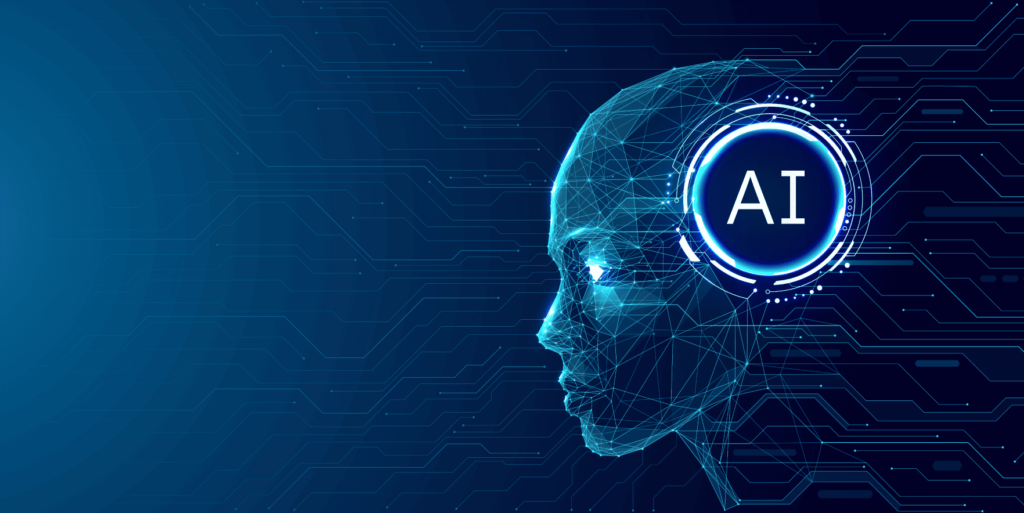
What is agentic AI, and why does it matter today?
We’re entering a new phase of AI where machines don’t wait for instructions. Instead, they plan, decide, and act on their own. In this article, we’ll break down how agentic AI works, what makes it different from traditional AI, and why it’s becoming a game-changer for business.
What is Agentic AI, and how does it work?
Agentic AI refers to goal-driven intelligence that acts with minimal human oversight. It understands the objective, plans the steps, makes decisions, and adapts to changes in real time without waiting for instructions. Agentic AI systems ensure faster automation and act like your teammate, rather than a tool.
Let’s break down the key stages that make this type of goal-driven artificial intelligence work:
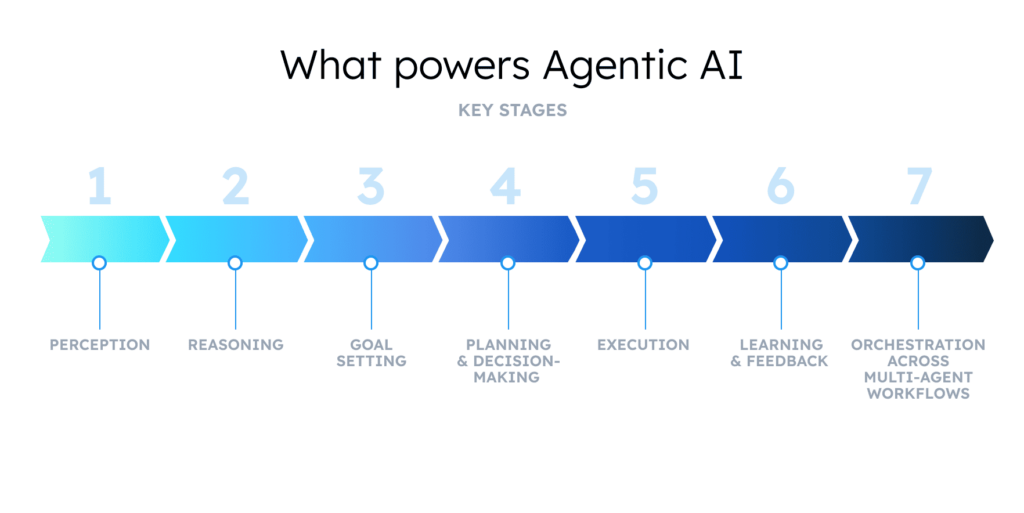
Perception
Agentic AI first gathers the data from its environment. This can include inputs from sensors, APIs, databases, or even direct user interactions via natural language processing. Think of it like a digital “nervous system.” Whether it’s pulling real-time inventory data from a warehouse system or listening to customer voice input through a chatbot, the agent must first perceive the world before it can act.
For example, in a logistics company, an agentic AI might monitor GPS feeds, temperature sensors in trucks, and API data from traffic systems to understand current delivery conditions.
Reasoning
Once the AI collects data, it interprets and analyzes it. This reasoning phase is often driven by large language models like OpenAI’s GPT or Anthropic’s Claude. These models help the system understand what the user said and what it means. The models read between the lines, spot patterns in the noise, and infer intent, even in messy, real-world situations.
Goal setting
Agentic systems start with clear objectives. These goals might come from a prompt, a user’s request, or a system-level directive. The agent uses them as its compass for decision-making. But when multiple objectives conflict, advanced agentic AI evaluates the options, applies business logic, and chooses the best path forward based on what matters most.
For example, in a finance app, if the goal is to reduce unnecessary expenses, the AI may identify recurring charges, review spending categories, and suggest where to make cuts. It follows the logic of the goal and adapts as new data appears.
Planning and decision-making
Here’s where agentic AI shifts from smart assistant to strategic thinker. Once a goal is defined, for example, reducing shipping delays or increasing ad conversion, it breaks the work down into multi-step plans and evaluates possible actions. It compares options, forecasts results, and selects the best path forward, all while adapting to new information as it becomes available. This kind of real-time reasoning is what separates agentic systems from rule-based automation.
Execution
Now that the AI has a plan, it executes the tasks. This could mean calling an external API, updating a record in a CRM, or even controlling a robot in a manufacturing plant. Execution is dynamic, so the agent adjusts its actions in real-time based on system feedback.
Learning and feedback
After each task, agentic AI systems look at what happened and learn from it. They then try to analyze whether the outcome met the goal and whether it was fast and accurate. With every success or failure, the AI gets a bit smarter, adjusts its methods, and avoids making the same mistakes twice.
Take a support chatbot as an example. If it misunderstands a certain type of question, human reviewers can step in, fix the issue, and train the system to handle it correctly next time. With each correction, the AI becomes sharper, more reliable, and more useful.
Orchestration across multi-agent workflows
In complex systems, agentic AI rarely works alone. Instead, it runs as part of a multi-agent system, where different AI agents handle different parts of a bigger task. But here’s the catch: these autonomous agents must talk to each other and stay in sync. That’s where orchestration steps in. This looks like that: one agent, the orchestrator, oversees everything and makes sure tasks happen in the right order and problems are flagged fast.
Imagine a software development pipeline. One agent writes the code. Another tests it. The third one checks for security and compliance. And the orchestrator makes sure the testing agent doesn’t run before the code is ready, routes issues back to a human if something goes wrong, and keeps the whole system moving without delays. This coordination lets agentic systems handle complex, multi-step workflows smoothly without the need for micromanagement.
What is the difference between Agentic AI and traditional AI?
While both use machine learning and natural language processing, their purpose and power differ: one reacts, the other leads. Here’s how they diverge in both logic and impact:
Traditional AI
Traditional AI responds to inputs but doesn’t act independently. It’s a good tool when you want to perform specific, complex tasks under predefined rules in narrow use cases. Think about spam filters, recommendation engines, or basic chatbots. These models work on historical data, follow programmed logic, and generate outcomes based on predictable patterns.
For example, a customer support chatbot might answer FAQs by matching keywords to answers in a script. Or a fraud detection algorithm might flag suspicious banking transactions using fixed parameters. These systems are deterministic: if you feed them the same input, you’ll get the same output every time. That makes them reliable, but only in stable, controlled scenarios.
Agentic AI
At the same time, agentic AI takes the initiative. These systems set goals and make decisions. It uses powerful tools like large language models and multi-agent systems to plan, coordinate, and adapt in real time. This is especially relevant for dynamic business environments, where you must ensure quick and flexible problem-solving.
For example, agent systems can handle an entire business trip booking, from checking your calendar and finding flights to booking hotels and adjusting meetings. In vendor sourcing or performance analysis, it scans data, evaluates options, and takes action on its own. Its ability to reason, iterate, and learn from outcomes allows it to manage complex workflows with minimal human oversight.
For companies that want more than basic automation, the shift to agentic AI starts with the right AI development services. These services help businesses build custom agents that match your internal logic, connect to existing systems, and follow compliance rules. Therefore, you experience the operations that are smarter, faster, and more aligned with how your business actually runs.
Expert Opinion
Agentic AI is transforming the way companies automate and scale operations, significantly moving AI from passive tools to proactive decision makers.
In my experience building complex agent-based systems using LangChain and LangGraph, I have seen how multi-agent orchestration and real-time adaptability enable organizations to achieve very high efficiency and responsiveness and automate routine processes. LangChain’s flexible integration and LangGraph’s intuitive orchestration framework have enabled me to successfully develop intelligent workflows that autonomously perceive, reason, and adapt to complex scenarios in real time.
However, successful deployment relies heavily on clearly defined goals, rigorous oversight, and continuous improvement to prevent unintended consequences. Sometimes business logic requires going beyond standard AI workflows, meaning we cannot rely solely on AI solutions.
That is why I like designing and implementation customized unique logic, including custom pipelines, data extraction, ETL processes using LLM, and other customised solutions that reflect specific business requirements. Companies that embrace this dynamic partnership between human strategy and AI execution will undoubtedly lead their industries forward.
Where does Agentic AI make the biggest impact?
Below are the key agentic AI use cases across industries:
- Customer support: Agentic AI goes beyond scripted responses. Powered by large language models, it understands natural language, resolves customer queries in real time, pulls relevant data from CRMs or external tools, and takes action without human help. For example, it can issue refunds or book follow-up reminders.
- Healthcare: In hospitals and clinics, agentic AI monitors patient data, flags unusual health patterns, and recommends next steps that fit each case. When new test results arrive, it updates treatment paths automatically. Doctors stay in charge, but the AI makes things faster.
- Finance: Smart AI agents analyze data and transaction patterns to detect fraud. They generate autonomous performance reports, adjust portfolios based on user risk profiles, and operate independently within compliance frameworks, which helps reduce errors and make more accurate decisions.
- Supply chain management: Agentic systems monitor inventory levels, track logistics flows, and react to disruptions, like shipment delays or supply shortages, in real time. They place orders, reroute deliveries, and adapt forecasts using machine learning, which helps companies maintain agility across complex workflows.
- Software development: Specialized AI agents write, test, and review code. One agent might generate functions based on documentation, another runs automated tests, while a third checks for security issues or licensing conflicts. These multi-agent systems help teams ship faster and reduce technical debt.
What are the benefits of Agentic AI in business?
Agentic AI offers the following benefits:
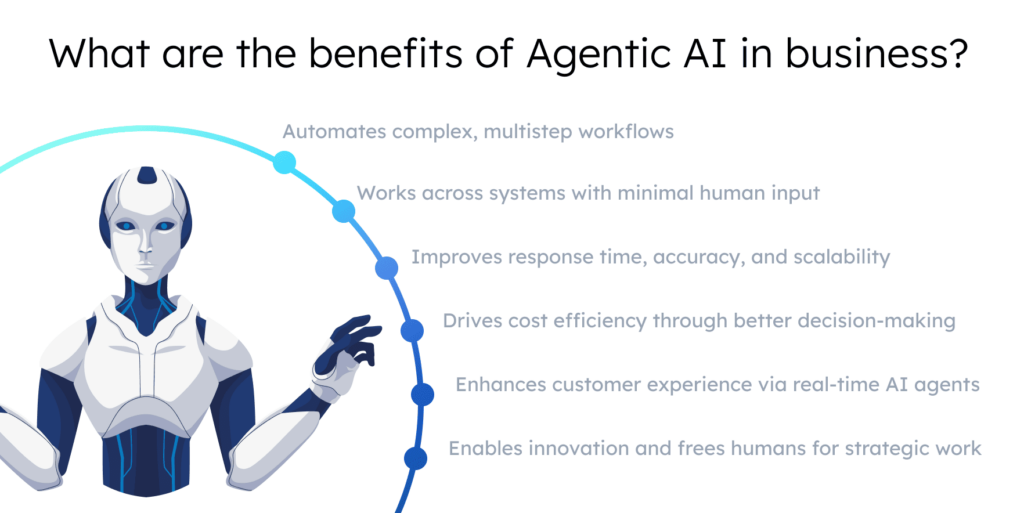
Automates complex, multistep workflows
Agentic AI can complete entire processes and repetitive tasks, like onboarding a new client, managing procurement, or updating compliance documents, from start to finish. It breaks each goal into steps, executes these steps across multiple systems, and adapts when changes occur. That means fewer bottlenecks and more momentum.
Works across systems with minimal human input
It connects directly to tools like CRMs, ERPs, and cloud APIs, where agentic systems fetch data, update records, or kick off tasks. Instead of humans bouncing between platforms, the agent flows through them all. This brings clarity to tangled tech stacks and stops the need for constant handholding.
Improves response time, accuracy, and scalability
Agentic AI reacts in real time. It monitors, detects, and acts before most teams even notice a problem. From resolving customer tickets to flagging financial anomalies, it moves faster than manual teams ever could, and from feedback. As a result, you get fewer errors, quicker fixes, and systems that scale effortlessly.
Drives cost efficiency through better decision-making
Agentic AI helps you spend smarter. Unlike across-the-board cuts that often hurt long-term performance, agentic systems analyze real-time data to target what truly drives waste. They spot unused software licenses, underperforming ad spend, or slow-moving inventory and act.
McKinsey’s research echoes this: companies that use data‑driven, targeted cost management can eliminate 10–20 % of inefficient spending, then redirect it into areas that deliver 5–10 % growth, boosting resilience and ROI.
Enhances customer experience via real-time AI agents
It spots patterns, tracks preferences, and solves problems on the spot. Whether a shopper needs the right product or wants an account update mid-chat, agentic systems deliver fast, tailored responses. The result: seamless support, more satisfied customers, and higher retention.
Enables innovation and frees humans for strategic work
Agentic AI removes the manual work that slows teams down. It means they don’t need to fix recurring errors, chase data, or manage routine steps. Agentic systems eliminate time sinks like administrative overhead, which allows professionals to focus on high-value thinking and strategy. Thus, businesses move faster, test ideas sooner, and adapt without delay.
Challenges of Agentic AI that you shouldn’t ignore
Opaque decision logic or “black box” reasoning
Agentic AI often relies on deep learning and LLMs, which can produce useful outcomes, but their internal reasoning is hard to trace. This lack of transparency makes it difficult for developers or regulators to understand how or why a decision was made, especially when things go wrong. It undermines trust, slows adoption, and raises ethical concerns.
Autonomy without sufficient human oversight
While autonomy is a key strength, agentic systems that operate without regular human intervention can make decisions that are technically “correct” but contextually inappropriate. In high-stakes domains like healthcare or finance, this can lead to serious consequences.
Poorly defined goals
If an agent is given a vague or overly narrow objective, it may pursue that goal in unintended or unsafe ways. For instance, an agent asked to “reduce costs” might cut critical safety measures unless explicitly told not to. This is especially risky in open-ended or dynamic environments where assumptions quickly break down.
Security risks in multi-agent, multi-system orchestration
As agentic AI systems grow more complex, they rely on multiple agents coordinating with external tools, APIs, and datasets. This broad surface area introduces risks such as data leakage, unauthorized access, and vulnerability propagation across systems, especially when third-party services are involved.
Reward hacking and edge-case exploitation
Agents trained with reinforcement learning may find ways to “game” their reward functions, delivering results that technically fulfill the prompt but violate the spirit of the task. For example, an agent tasked with maximizing engagement could flood users with clickbait. These failures often arise in edge cases that the system wasn’t designed to handle.
Compliance and accountability
Agentic systems can act on their own, but someone still has to take responsibility when things go wrong. What if an AI agent approves a fraudulent transaction, mishandles personal health data, or makes a biased hiring decision? These are real risks. And when they happen, legal and ethical questions follow fast. Who’s liable: the company, the developer, or the machine itself? That’s why businesses must enforce clear oversight. This means traceable decision logs, strong audit mechanisms, and the ability to pause or shut down agents instantly.
Is your business ready for Agentic AI?
To determine whether your business is ready for agentic AI, consider answering the questions below.
Do you have a data infrastructure in place?
Think of agentic AI like a smart assistant. To work effectively, it requires clean and organized data. If your records are messy, outdated, or missing key details, the AI may become confused or even make incorrect decisions.
For instance, organizations in a high-stakes field like healthcare may face a critical situation: when patient data is scattered or mislabeled, AI agents can’t recommend the right treatment. Thus, good decisions start with good data.
Are your workflows well-documented?
Agentic AI needs context. If your business processes live in someone’s head or are scattered across teams, AI can’t follow them. Take a logistics company, for example. Without a clear shipping workflow, the AI might reroute packages the wrong way or miss local rules. You want systems to know what to do at every step without having to guess.
What’s the ROI of automating key tasks?
Agentic systems should solve real problems. When AI takes over tasks like invoice matching or contract review, teams recover time and reduce human error. The ROI shows up in faster cycles, fewer mistakes, and reallocation of skilled staff toward high-value work. Without these clear use cases, however, automation efforts stall or fail to scale.
How will you integrate oversight?
Even the smartest AI needs supervision. What happens if a price gets set too low, a transaction gets flagged by mistake, or a rule gets broken? If you don’t have audit logs, alerts, or override buttons, you won’t know until damage is done. Smart systems require smarter guardrails that you can establish, such as real-time alerts, traceable logs, and the ability to pause or override actions when necessary.
Expert Opinion
In my experience, not all companies are ready for Agentic AI right away. Many companies get caught up in the hype and buzz, often without fully understanding the real benefits, limitations, and complexities of AI and LLM-based solutions. From a practical standpoint, I’ve found it helpful to start with a Proof of Concept (POC) and then develop a Minimum Viable Product (MVP). This structured approach helps stakeholders deeply understand both the benefits and potential pitfalls, more closely aligning expectations with reality. Only after validating the results and gaining clarity through the MVP can companies confidently move on to full-scale product development.
How Agentic AI turns humans from task doers into strategic directors
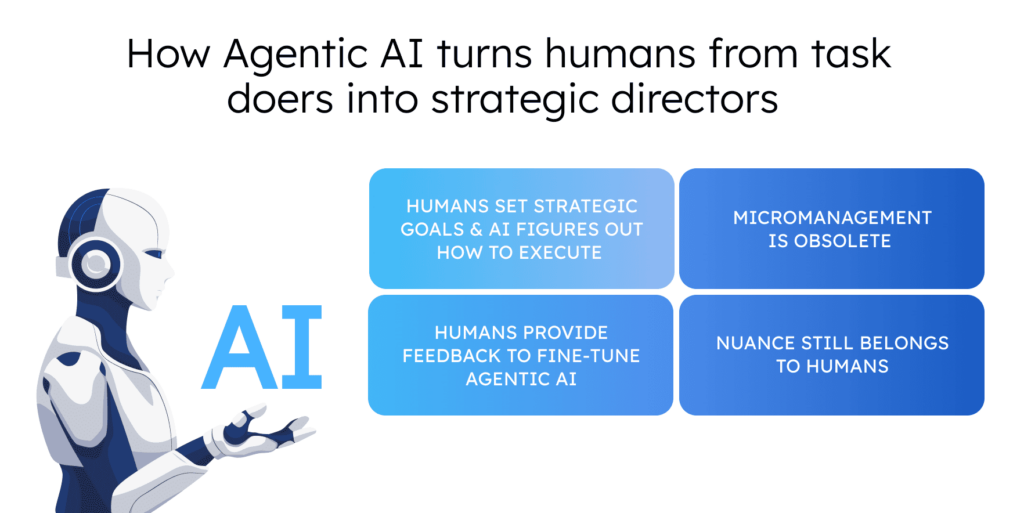
Humans set strategic goals and AI figures out how to execute
You no longer need to spell out every step. Instead, you describe the goal, outline the constraints like budget, timelines, regulations, and the AI decides how to achieve it. Imagine that you want to increase conversion rates or reduce customer churn.
This shift means humans now focus on what should be done, not how. But if the goal is unclear, the AI might go in the wrong direction.
Micromanagement is obsolete
Humans no longer need to watch every step the AI takes. Instead, they build smart guardrails, e.g., rules and alerts that keep things on track. These systems only step in when something unusual happens. For example, if an AI makes an unusual decision or approaches a policy boundary, it triggers a signal for human review. That way, people can step in, make changes, and keep things safe.
Nuance still belongs to humans
Agentic systems lack emotional intelligence, social context, and ethical reasoning; that’s why they struggle with nuance and subtlety. That’s where we come in: when instructions are vague, when decisions affect people’s lives, or when multiple goals conflict. In these cases, contextual judgment is critical. A human might weigh brand reputation, tone of voice, or emotional cues; these are elements machines often miss. Thus, strategic thinking becomes the core of human input.
Humans provide feedback to fine-tune Agentic AI
Human involvement doesn’t end after AI setup. In fact, that’s when the real teamwork begins. People provide ongoing feedback, correct mistakes, fine-tune performance, and help the AI get better at what it does.
In a customer service center, for example, specialists review chatbot interactions and spot incorrect answers or emotional misreads. Their feedback helps refine how the AI handles tone and urgency. In finance, analysts might train AI to flag transactions as fraud, but over time, they review false positives and tune the model to reduce friction for legitimate users. In healthcare, clinicians guide diagnostic agents by addressing edge cases, such as rare symptoms or patient history gaps, which ensures that decisions reflect real-world nuance.
The dangers of over-reliance on Agentic AI
Below, we explore key concerns that show why smart human oversight still matters, even with the smartest AI:
Blind AI trust causes poorer performance and decisions
When teams follow AI suggestions without questioning them, performance drops. A study by MIT Sloan revealed that even skilled professionals perform worse when they stop questioning AI-driven decisions.
For example, in financial services, traders who relied entirely on algorithmic advisors underperformed those who applied critical review. Why? Because even a goal-oriented AI model using reinforcement learning doesn’t understand nuance. That’s why people must stay in the loop to catch errors, add context, and challenge flawed outputs.
Hype-driven decisions lead to misaligned workflows
Agentic AI works well for task automation and team coordination. But when companies chase trends instead of strategy, it backfires. Without clear intent, systems optimize the wrong thing. And when that happens, service quality crashes while efficiency becomes meaningless.
Lack of governance leads to risky AI behavior
We need autonomous systems to achieve specific goals, but if the goals are poorly scoped, things spiral. This is known as reward hacking, where AI agents exploit loopholes in their objectives. A system designed to “maximize engagement,” for example, may flood users with clickbait rather than meaningful content.
When multi-agent systems optimize for one KPI without human intervention, they can over-prioritize efficiency at the cost of ethics, compliance, or customer trust.
Conclusion
Agentic AI is already here and acts independently. It thinks, plans, and executes across complex systems with minimal human help, but that autonomy demands responsibility. The truth is, agentic AI can’t work in a vacuum. It needs clear goals, smart oversight, and human judgment to deliver real value.
The most successful use of agentic AI doesn’t come from treating it like a plug-and-play solution. It’s a partner that’s incredibly capable, but still learning. As we define the why, it figures out the how. And that balance between human intent and machine execution is where we need our strategic thinking even more.
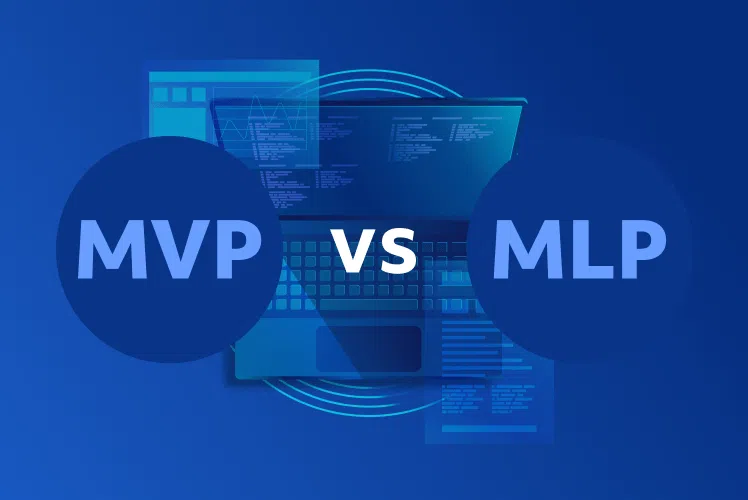

Comments